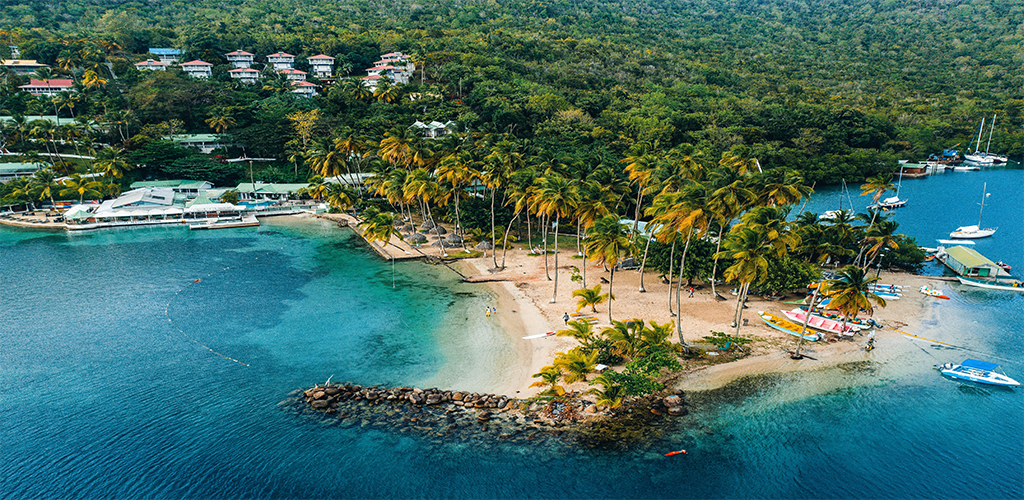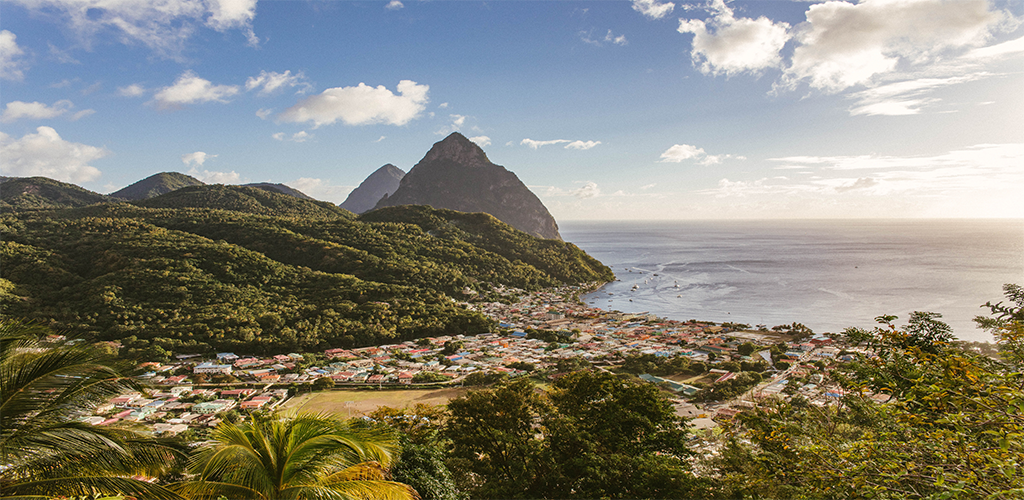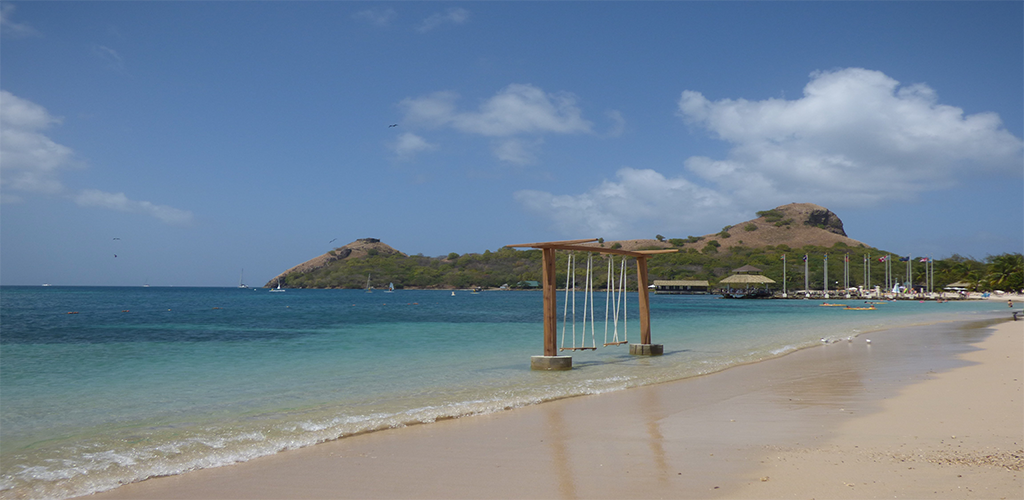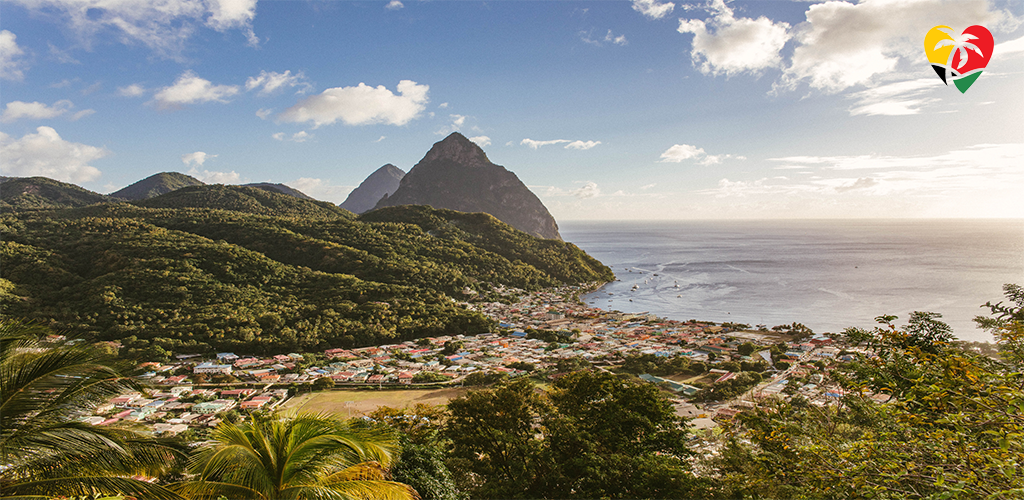Saint Lucia is an island republic in the Eastern Caribbean with the Pitons, a pair of steeply tapered mountains on its west coast. Volcanic beaches, reef diving sites, luxury resorts, and fishing towns line the coast. St. Lucia is the Caribbean’s beauty queen, crowned by the towering twin volcanic peaks of the Pitons. St. Lucia’s many features include crescent-shaped beaches, local fishers, rainforests, reefs, waterfalls, geothermal sites, and lush highlands. In St. Lucia, adventure enthusiasts will find much to do. Popular island activities include ziplining, climbing the Pitons, hiking the many marked nature trails, horseback riding, sightseeing cruises, and exploring the island’s active volcano. On the west coast of St. Lucia, diving is superb, with a diverse array of corals, sponges, and reef fish.
Photo by Corinne Kutz on Unsplash
Marigot Bay

Marigot Bay is undoubtedly St. Lucia’s most picturesque bay. It’s best seen from a vantage point on the road that connects the main Caribbean coastal route to the bay itself. Yachts bob on the bay’s azure waters, and lush hillsides lead to a lovely palm-fringed beach. The harbor is so deep and secluded that the British fleet is said to have hidden their masts with palm leaves to avoid the French. Marigot Bay was also the site for the 1967 film Doctor Doolittle, which has left an indelible impression on the names of some of the local businesses. Visitors can take a water shuttle across the bay to hotels on the other side of the bay. If you choose to stay here, the premium Marigot Water Resort and Marina offers beautiful views of yachts gliding in the bay among the green hills.
Anse Chastanet Marine National Park

The coral reef at Anse Chastanet is home to a plethora of marine life. Divers can see colorful sponges, soft corals, boulder coral, and brain corals on a two- to eight-meter plateau. Divers can see a variety of fish in the coral gardens, including parrotfish, goatfish, wrasse, Chromis, and barracudas, as well as frogfish in a nearby cavern. The plateau’s edge is marked by a 46-meter drop into a lace coral habitat teeming with lobsters, crabs, and eels. Plate coral begins at depths of less than 30 meters. Anse Chastanet is a protected beach with spectacular views of the Pitons above the level. Anse Mamin, about a 10-minute walk away, is less busy, with a nice secluded vibe and excellent snorkeling.
Soufriere

The colorful fishing community of Soufriere wraps around a magnificent bay, guarded by the high Pitons. This traditional St. Lucian village is about an hour’s drive south of the capital, Castries, and is a perfect place to base yourself for a couple of days exploring the surrounding sites. Soufriere, which dates back to around 1745, has a fascinating history. Its most famous resident is Josephine, Emperor Napoleon Bonaparte’s wife, who was born here in 1763. However, the town square was the site of the guillotine, which was erected during the French Revolution in 1780, and many plantation owners and their families were beheaded here. If you’re taking a sightseeing trip, make a point of stopping by the town center to visit the Church of the Assumption of the Blessed Virgin Mary, which features magnificent azure accents. In town, there are also many colorful buildings with filigreed balconies and tin roofs. Hiking the beautiful Tet Paul Nature Trail, visiting Sulphur Springs Park, and wandering through the Diamond Falls Botanical Gardens are some of the other things to see and do in Soufriere. You may relax on the beautiful palm-lined Anse Mamin beach if you prefer something a little more laid-back. Soufriere is also the perfect place to start a climb up the Pitons, such as the Gros Piton Nature Trail or the Petit Piton Trail.
Pigeon Island

Pigeon Island National Park, located across from Rodney Bay, is one of St. Lucia’s most important historic sites. During their war for control of St. Lucia, the British used strategic lookouts on the island to track the movements of French troops in Martinique. Today, a causeway connects the island to the mainland, and hikers can enjoy panoramic views of St. Lucia’s northwest coast from the vantage point. The ruins of military buildings used during fights between the French and the English, as well as an interpretive center explaining the island’s rich history, a modest café, and two white-sand beaches, are all located on the island.



1 Comment